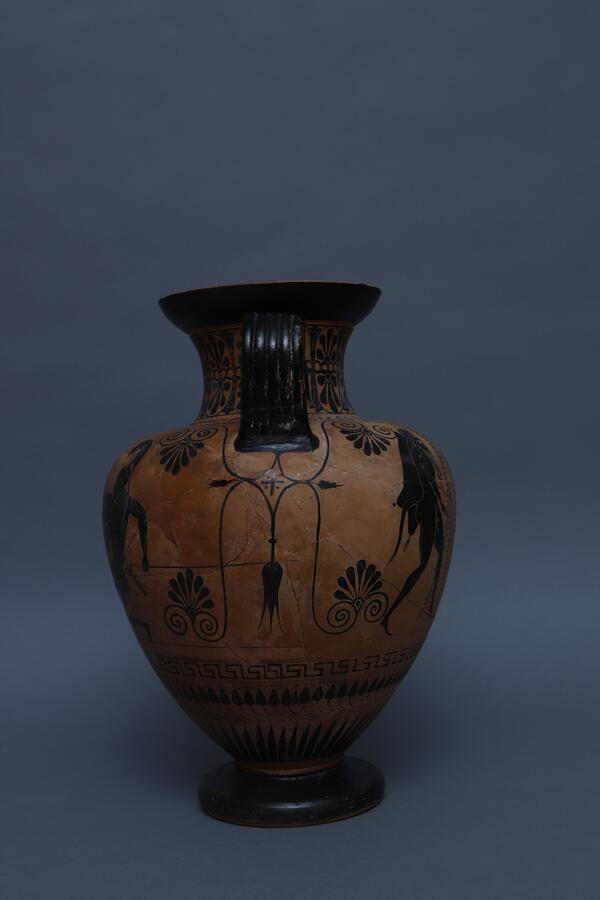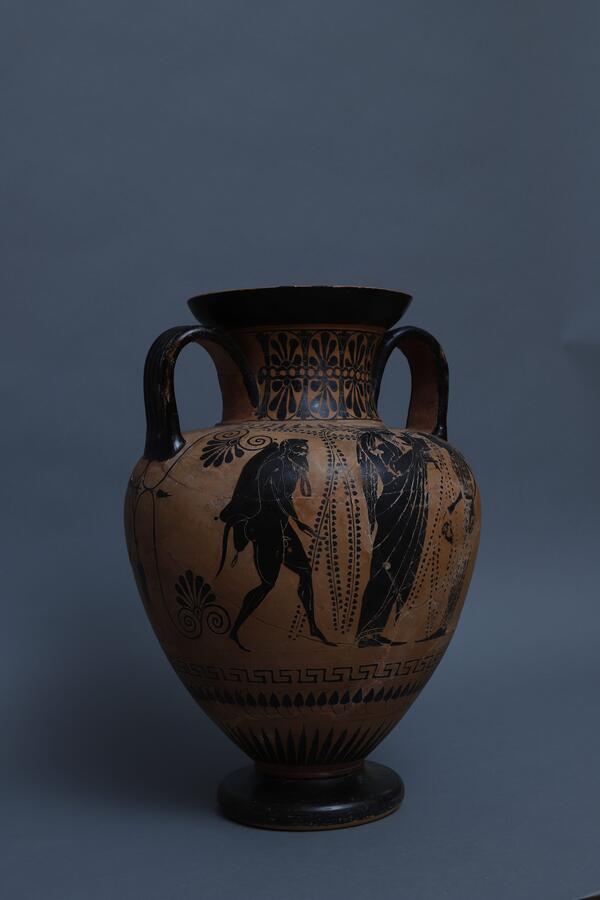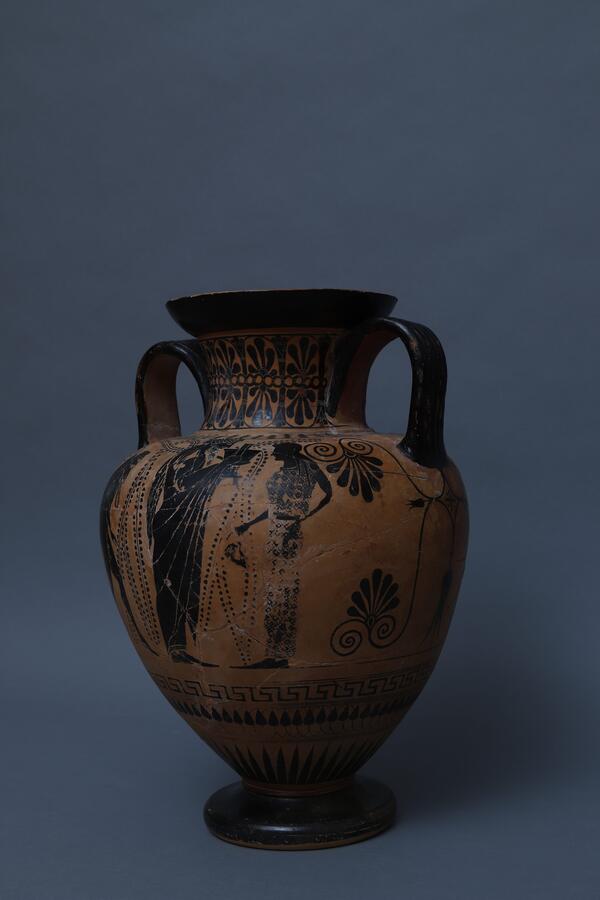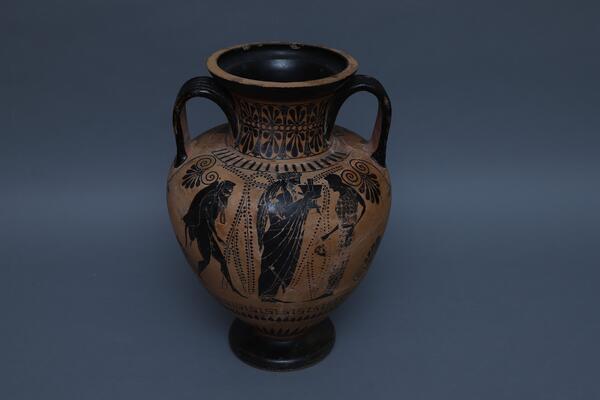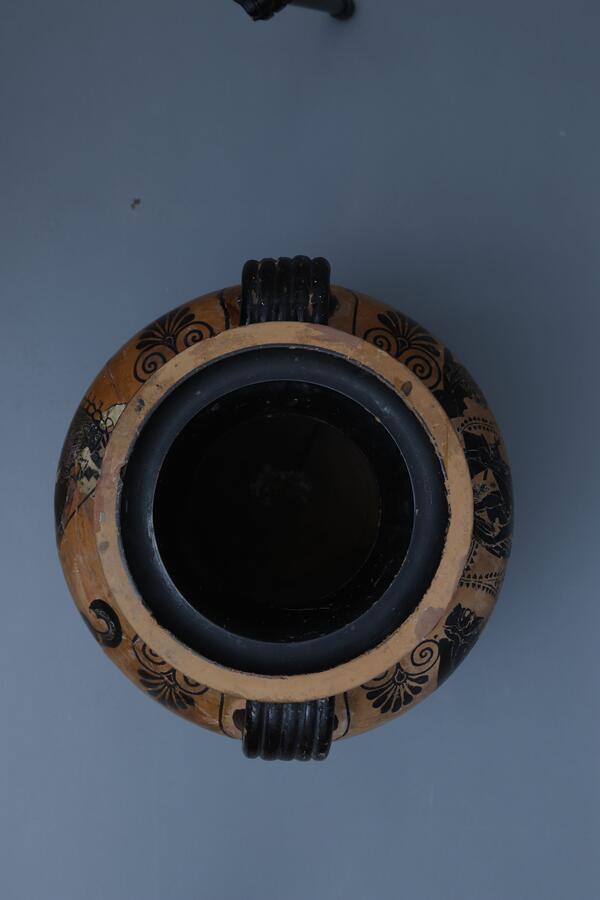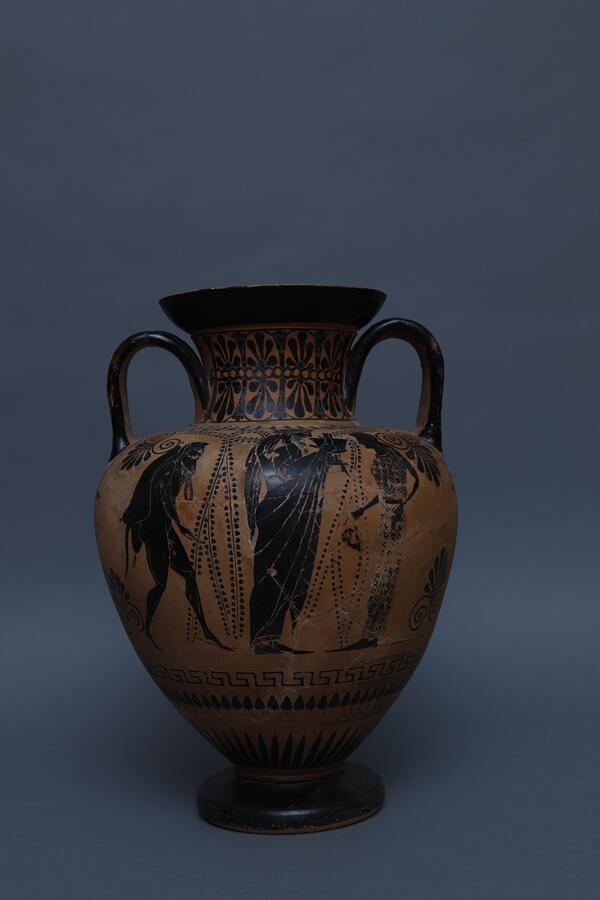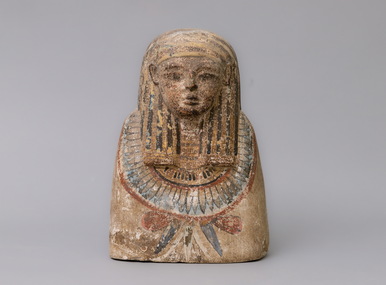An amphora is an elegant vessel with a narrow neck and two handles on opposite sides. It was commonly used by the ancient Greeks and Romans. Its name originated from the Ancient Greek word “amphoreus” which means “carried on both sides”. Most amphorae were ceramic, and in rare instances, they were made of bronze, silver, marble, or glass. Clay amphorae were ubiquitous, being used mainly for storing wine, olive oil, grain, and flour.
Some amphorae were produced with a pointed base to allow safe storage during transportation by embedding them in sand. The vessel’s shape indicated its geographic origin, the contents, and their price. An amphora could also be used as a unit of measure, a ballot box, and a burial urn.
Black-figure pottery painting was a popular style of painting on amphorae between the 7th and 4th centuries BC. The color of the body clay formed the background, while the silhouettes were painted with a black slip, a special type of glossy clay. The details were incised with a pinpoint tool. Earth-based red and white pigments could also be used to add intricate ornaments. After that, the amphora received a three-phase firing, for the body clay and the applied slip to harden and get a richer color.
The main innovation of the black-figure style was the subject matter of the images. Before that, vases were decorated with geometric patterns or simplified animal silhouettes, and artists tried to cover the vessel’s entire surface with decorations. The black-figure ceramic always illustrated a story — most frequently, a mythological scene, a banquet, or a fight between famous heroes. The foot and neck were decorated with bands of ornaments, including palmettes — a motif consisting of palm tree leaves. The areas below the handles were decorated with volutes — spiral scroll-like ornaments with a circle in the center.
On one side, the amphora from the collection of the Voronezh Art Museum features the image of the Gigantomachy — the fight between the Olympian goddess Athena and the Giant Echion. Athena stabs her spear at the enemy who has fallen on his right knee and holds a shield bearing the image of the Gorgon Medusa.
On the other side of the amphora, there is a depiction of Dionysus and Ariadne. Hundreds of artworks have been dedicated to their famous love story. Dionysus found Ariadne sleeping and fell in love at first sight. He won the heart of the young woman who had previously lost faith in love. Ariadne reciprocated his feelings, and they got married. However, soon Ariadne died. Dionysus was inconsolable. Zeus had compassion for him and granted Ariadne immortality. Her precious wreath made by Hephaestus was set in the heavens and became the constellation known as Corona Borealis or the Northern Crown.
Some amphorae were produced with a pointed base to allow safe storage during transportation by embedding them in sand. The vessel’s shape indicated its geographic origin, the contents, and their price. An amphora could also be used as a unit of measure, a ballot box, and a burial urn.
Black-figure pottery painting was a popular style of painting on amphorae between the 7th and 4th centuries BC. The color of the body clay formed the background, while the silhouettes were painted with a black slip, a special type of glossy clay. The details were incised with a pinpoint tool. Earth-based red and white pigments could also be used to add intricate ornaments. After that, the amphora received a three-phase firing, for the body clay and the applied slip to harden and get a richer color.
The main innovation of the black-figure style was the subject matter of the images. Before that, vases were decorated with geometric patterns or simplified animal silhouettes, and artists tried to cover the vessel’s entire surface with decorations. The black-figure ceramic always illustrated a story — most frequently, a mythological scene, a banquet, or a fight between famous heroes. The foot and neck were decorated with bands of ornaments, including palmettes — a motif consisting of palm tree leaves. The areas below the handles were decorated with volutes — spiral scroll-like ornaments with a circle in the center.
On one side, the amphora from the collection of the Voronezh Art Museum features the image of the Gigantomachy — the fight between the Olympian goddess Athena and the Giant Echion. Athena stabs her spear at the enemy who has fallen on his right knee and holds a shield bearing the image of the Gorgon Medusa.
On the other side of the amphora, there is a depiction of Dionysus and Ariadne. Hundreds of artworks have been dedicated to their famous love story. Dionysus found Ariadne sleeping and fell in love at first sight. He won the heart of the young woman who had previously lost faith in love. Ariadne reciprocated his feelings, and they got married. However, soon Ariadne died. Dionysus was inconsolable. Zeus had compassion for him and granted Ariadne immortality. Her precious wreath made by Hephaestus was set in the heavens and became the constellation known as Corona Borealis or the Northern Crown.


